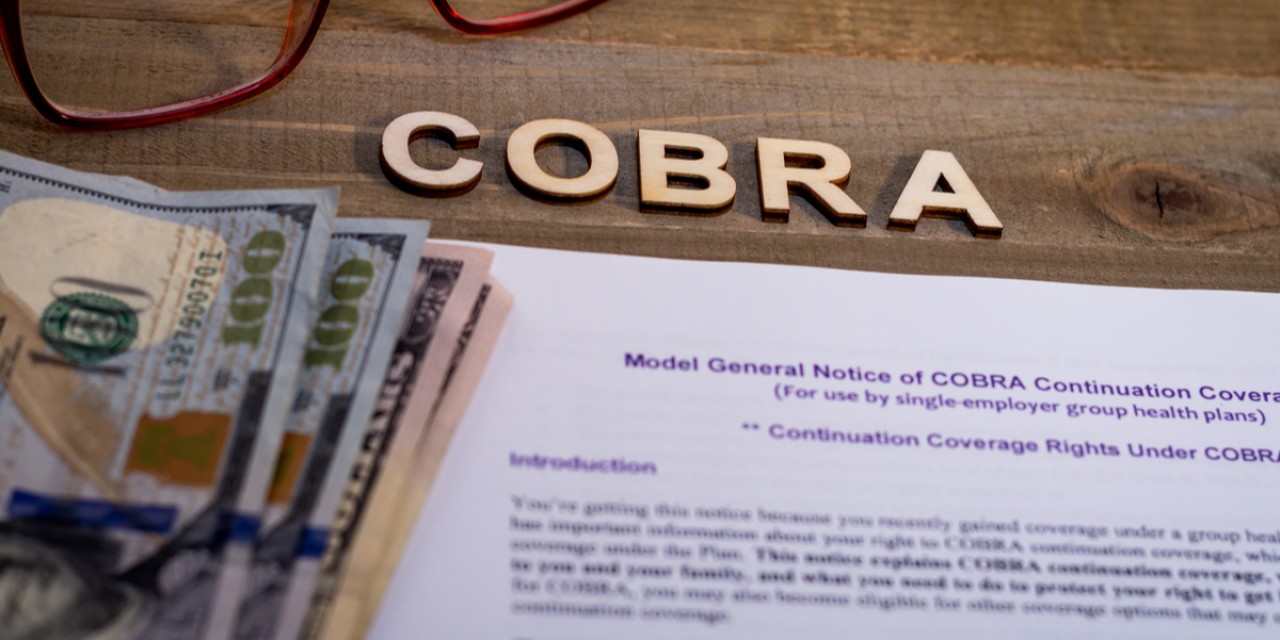

A Notice Deadline for COBRA Premium Assistance Under the American Rescue Plan is Fast Approaching

The American Rescue Plan (“ARP”), signed into law on March 11, 2021, requires employers to provide 100% premium assistance for COBRA continuation coverage to certain eligible individuals. While the law includes several requirements for employers as it relates to COBRA continuation coverage, and provides for a tax credit, there are certain things to keep top of mind to ensure compliance with the ARP. Of particular significance, employers should be aware of the upcoming May 31, 2021 notice deadline.
Who Is Covered?
The COBRA premium assistance provisions apply to all group health plans sponsored by private-sector employers or employee organizations subject to federal COBRA or comparable state laws (mini-COBRA). They also apply to plans sponsored by state or local governments subject to the continuation provisions under the Public Health Service Act.
Individuals may be eligible for premium assistance (“Assistance Eligible Individuals” or “AEIs”) between April 1, 2021 and September 30, 2021 (the “Subsidy Period”) if they are:
- Qualified beneficiaries who are already enrolled in COBRA due to a qualifying event (their own or a family member’s reduction in hours or an involuntary termination from employment, except for gross misconduct);
- Qualified beneficiaries who become eligible for COBRA due to a qualifying event between April 1, 2021 and September 30, 2021 and they elect COBRA continuation coverage; or
- Qualified beneficiaries who became eligible for COBRA prior to April 1, 2021 due to a qualifying event, if their period of COBRA coverage falls within the Subsidy Period. This is true even if they did not elect COBRA continuation coverage when it was initially offered or if it was discontinued prior to April 1, 2021.
A qualified beneficiary eligible for premium assistance under the ARP includes any employee or former employee, spouse, and dependent child covered under the plan on the day before the event that caused the loss of coverage. Each qualified beneficiary can independently elect coverage and a parent or legal guardian can elect on behalf of a dependent.
Although the Subsidy Period extends to September 30, 2021, an individual’s subsidy may end earlier if their maximum COBRA continuation coverage period ends prior to September 30, 2021 or if they become eligible for another group health plan, an FSA, or Medicare.
What Are Employers Required to Do?
In addition to providing AEIs with 100% premium assistance between April 1, 2021 and September 30, 2021, the law mandates that employers provide notice to employees of their rights under the ARP and one of these notice deadlines is fast approaching. Qualified beneficiaries who suffered a qualifying event prior to April 1, 2021 and who did not previously elect COBRA continuation coverage, or whose coverage was discontinued, now have a renewed opportunity to elect coverage and receive premium assistance. Importantly, these individuals must be notified of their rights under the ARP by May 31, 2021. If they elect coverage, these individuals can begin their coverage prospectively from the date of their election, or, if an individual has a qualifying event on or before April 1st, choose to start their coverage as of April 1st, even if the individual receives an election notice and makes such election at a later date. In either case, notice must be given to these individuals by May 31, 2021.
Additional Notice Requirements
In addition to the May 31, 2021 deadline above, the ARP requires the following notices:
- An ARP General Notice of continuation coverage must be provided to all qualified beneficiaries who have a qualifying event between April 1, 2021 and September 30, 2021.
- A Notice of Expiration of Period of Premium Assistance is also required to notify individuals when their coverage is set to expire. This notice must be provided 15-45 days before the individual’s subsidy expires and should explain that the subsidy will expire soon, state the date of the expiration, and indicate that the individual may be eligible for coverage without any premium assistance through COBRA continuation coverage or coverage under a group health plan, Medicaid or the Health Insurance Marketplace.
- Finally, the Department of Labor published a Summary of the COBRA Premium Assistance Provisions under the American Rescue Plan Act of 2021. This summary document should accompany the required notices and contains a Request for Treatment as an Assistance Eligible form which should be completed and returned within 60 days for the individual to be eligible for premium assistance.
The Department of Labor has issued helpful guidance, as well as model notices on its website. The model ARP General Notice can be used to satisfy the election notice requirements under both COBRA and the ARP.
COBRA Premium Assistance Tax Credits
Although the ARP requires health insurance issuers and group health plans to treat Assistance Eligible Individuals as having paid the full amount of their COBRA premium, to compensate for the premium assistance mandated under section 9501(a) of ARP, section 9501(b) adds a new section to the Internal Revenue Code, section 6432. That section provides that the person who would normally receive the COBRA premiums will instead get a tax credit “against the tax imposed by section 3111(b), or so much of the taxes imposed under section 3221(a) as are attributable to the rate in effect under section 3111(b).” 26 U.S.C. § 6432(a) (publication forthcoming).
The tax imposed by section 3111(b) is a portion of the FICA tax imposed upon employers; it is denominated the “hospital insurance” tax but is generally referred to as the Medicare tax. This tax is 1.45 percent of wages. 26 U.S.C. § 3111(b). Section 3221(a) is a reference to the Railroad Retirement Tax Act, which applies FICA rates. See 26 U.S.C. § 3221(a).
The credit is dollar for dollar, as the credit for each quarter is “an amount equal to the premiums not paid by assistance eligible individuals for such coverage by reason of such section 9501(a)(1) with respect to such calendar quarter.” 26 U.S.C. § 6432(a). While the credits can only be applied to the Medicare tax under FICA, and the parallel tax under the Railroad Retirement Tax Act, excess credits are refundable. 26 U.S.C. § 6432(c)(1), (2). The credit may be advanced, and deposit penalties are waived if they are the result of anticipated credits. 26 U.S.C. § 6432(c)(2)(B), (C).
Section 6432 of the Code also includes a provision precluding double benefits. It accomplishes this by first including the credit in gross income and by barring credits for amounts treated as qualified wages under the CARES Act or as qualified health plan expenses under the FFCRA. 26 U.S.C. § 6432(e).
The IRS has issued guidance on the application of the ARP relating to COBRA premium assistance on its website.
Next Steps
Employers should be sure to perform an assessment of all individuals who suffered a qualifying event prior to April 1, 2021 to determine whether they may be eligible for premium assistance during the Subsidy Period and provide the required notice by the May 31, 2021 deadline. It also is important to implement a process to notify all other individuals who may become eligible for premium assistance between April 1, 2021 and September 30, 2021 of their eligibility and be sure to keep track of the expiration dates of any individuals who have elected coverage during the Subsidy Period in order to properly provide them with notice of the expiration of their premium assistance.
Disclaimer: This post does not offer specific legal advice, nor does it create an attorney-client relationship. You should not reach any legal conclusions based on the information contained in this post without first seeking the advice of counsel.
Related Industries
- Communications
- Construction
- Banking and Financial Services
- Commercial Transportation
- Health Care
- Higher Education
- Insurance
- Manufacturing
- Medical Device & Life Sciences
- Municipal & Government
- Pharmaceutical
- Professional Services
- Retail
- Real Estate
- Death Care
- Hospitality
- Energy and Utilities
- Heavy/Highway & Utility Construction
- Supply Chain & Logistics
- Private Equity & Venture Capital


